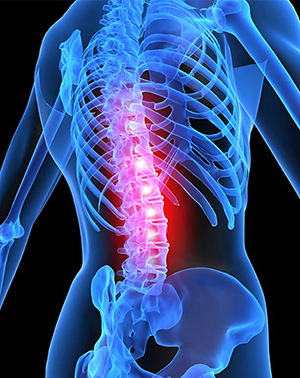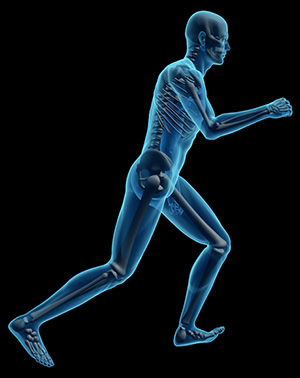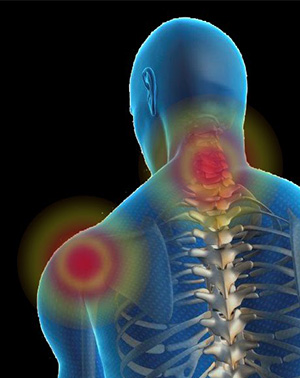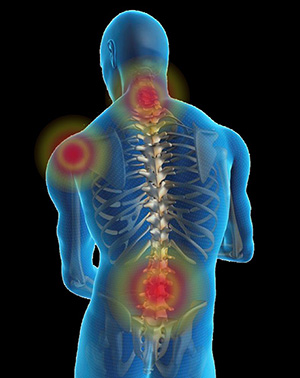Courses Overview
If you are a registered Physiotherapist, a registered Doctor of Medicine, a registered Chiropractor, or a registered Osteopath then you are eligible to apply to complete the NZ branch courses.
The McKenzie Education Programme provides four courses leading to the Credentialing Exam. Each course builds on the previous course, hence they need to be taken in the appropriate order.
The Credentialing Exam ensures a consistent level of clinical attainment. Qualified clinicians can be easily located via the MINZ website.
The highest level of training in the McKenzie Method® is recognised by certified clinicians with a Diploma in MDT (Dip. MDT).

Part A - The Lumbar Spine
This 28 hour course presents the theoretical aspects and concepts of the McKenzie Method in Mechanical Diagnosis and Therapy, as applied in the examination and treatment of patients with complaints of low back and related referred pain.
One day of the course is completed as an online Distance Learning component. The other three days are with an Instructor at a teaching venue.
Through lectures and patient demonstrations the derangement, dysfunction and postural syndromes are described in detail and appropriate treatment plans are outlined with emphasis on the use of patient self-treatment procedures.
The clinical efficacy and limitations of the McKenzie approach as applied to the lumbar spine are illustrated by follow-up patient demonstrations.
Course Goals
Following attentive participation in, and completion of, this course will provide participants with the introductory knowledge, basic skills and abilities to begin to:
- Appropriately apply the McKenzie Method of Mechanical Diagnosis and Therapy to patients with lumbar spine problems.
- Distinguish between the McKenzie syndromes (derangement, dysfunction, postural) and other spinal conditions and provide appropriate management regimens for each of the McKenzie syndromes.
- Identify when the application of external forces is required for the resolution of symptoms using McKenzie’s concept of progression of forces.
- Assist patients to design and apply the therapeutic processes to achieve management goals.
Total Course time: 7 hours online, 21 hours live course
Course Format
7 hours online component to be completed prior to live course commencing
Friday – 9.00 – 5.00pm
Saturday – 9.00 – 5.00pm
Sunday – 9.00 – 5.00pm
Course Price
$700.00 +GST if booked and paid 4 weeks before the course commences
Course Disclaimer:
No refunds will be given for cancellations received within two weeks prior to the course commencement date. The McKenzie Institute New Zealand will not be responsible for airfares or any other expenses incurred should the course be cancelled due to circumstances outside of its control. However, we will transfer your course fee to the next available course. If you would prefer to have a refund, we hold the right to charge an administration fee for work already carried out. This will be subject to circumstances. Please confirm with the Course Co-ordinator that the course is proceeding prior to purchasing non-refundable air tickets.
Part A must be completed first, and Part D completed last. The order for completing Parts B and C is at the discretion of the course participant. Completion of Parts A to D is a prerequisite for the Credentialling Examination.

Part B - The Cervical and Thoracic Spine
Course Overview
This 28 hour, four day course presents the theoretical aspects and concepts of the McKenzie Method in Mechanical Diagnosis and Therapy, as applied in the examination and treatment of patients with complaints of neck, upper back and related referred pain.
In selected countries (including New Zealand), one day of the course is completed as an online Distance Learning component. The other three days are with an Instructor at a teaching venue.
Through lectures and patient demonstrations the derangement, dysfunction and postural syndromes are described in detail and appropriate treatment plans are outlined with emphasis on the use of patient self-treatment procedures.
The clinical efficacy and limitations of the McKenzie approach as applied to the cervical and thoracic spine, are illustrated by follow-up patient demonstrations
Course Goals
Following attentive participation in, and completion of, this course will provide participants with the introductory knowledge, basic skills and abilities to begin to:
- Appropriately apply the McKenzie Method of Mechanical Diagnosis and Therapy.
- Distinguish between the McKenzie syndromes (Derangement, Dysfunction, Postural) and other spinal conditions and provide appropriate management regimes for each of the syndromes.
- Identify when the application of external forces is required for the resolution of symptoms using McKenzie's “progression of forces” concept.
- Assist patients to design and apply the therapeutic processes on their own to achieve management goals.
Total Course time: 7 hours online, 21 hours live course
Course Format
7 hours online component to be completed prior to live course commencing
Friday – 9.00 – 5.00pm
Saturday – 9.00 – 5.00pm
Sunday – 9.00 – 5.00pm
Course Price
$700+GST if booked 4 weeks prior to the commencement date
Course Disclaimer:
No refunds will be given for cancellations received within two weeks prior to the course commencement date. The McKenzie Institute New Zealand will not be responsible for airfares or any other expenses incurred should the course be cancelled due to circumstances outside of its control. However, we will transfer your course fee to the next available course. If you would prefer to have a refund, we hold the right to charge an administration fee for work already carried out. This will be subject to circumstances. Please confirm with the Course Co-ordinator that the course is proceeding prior to purchasing non-refundable air tickets.
Part A must be completed first, and Part D completed last. The order for completing Parts B and C is at the discretion of the course participant. Completion of Parts A to D is a prerequisite for the Credentialling Examination.

Part C – Advanced Lumbar Spine and Extremities – Lower Limb
Course Overview
This 28 hour workshop will review and advance the theory and practical application of Mechanical Diagnosis and Therapy in relation to the Lumbar Spine.
Problem solving, reflective learning and clinical reasoning activities are utilised to refine the assessment, classification, differential diagnosis and management of patient’s presenting with symptoms related to the lumbar spine.
Practical sessions are utilised to develop skills in the application of both self-treatment and clinician procedures.
The theory and practical application of the MDT for lower limb musculoskeletal disorders is presented. Lectures, patient assessments and practical sessions are utilised to demonstrate the characteristics and management of the syndromes as they present in the lower limb.
Course Goals
Following attentive participation and completion, this course will provide participants with the intermediate knowledge, skills, and abilities to:
- Identify and discuss common problems encountered in the application of Mechanical Diagnosis and Therapy for the lumbar spine.
- Analyse and discuss the MDT assessment and how it assists with patient classification.
- Discuss the application of clinician forces, and how they fit with McKenzie’s ‘Progression of Forces’ concept.
- To perform clinician techniques for the lumbar spine at an advanced level and to identify problems with their application.
- Analyse case studies of patients presenting with lumbar spine symptoms and determine classification.
- Describe and discuss the current evidence base for the use of MDT for lower limb musculoskeletal disorders.
- Describe the characteristics of Derangement, Dysfunction and Postural syndromes as they present in lower limb musculoskeletal disorders.
- Perform MDT assessments for lower limb musculoskeletal disorders and determine the presence of McKenzie syndromes.
- Design appropriate management programs for patients who present with Derangement, Dysfunction and Postural syndromes in the lower limb.
- Analyse case studies of patients presenting with lower limb symptoms and determine classification.
Prerequisites
Completion of the following McKenzie Institute courses, presented by certified McKenzie Institute Teaching Faculty:
Part A: The Lumbar Spine
The course is open as a refresher to all credentialed and diplomaed clinicians and those who have completed Parts C or D
Practical Sessions
During the practical sessions, participants are requested to wear suitable clothing, allowing easy access to the spine.
Preparation for the Course
A thorough review of McKenzie's text books (The Lumbar Spine – MDT and The Cervical and Thoracic Spine – MDT) as well as the Part A course manuals is strongly recommended. Participants are expected to regularly use and to be conversant with the McKenzie assessment forms.
Course Format:
Thursday – Sunday 9.00am-5.00pm (4 days of face-to-face instruction)
Total course time: 28 hours live course
Course Fees:
$700+GST if booked and paid 4 weeks before the course commences
Course Disclaimer:
No refunds will be given for cancellations received within two weeks prior to the course commencement date. The McKenzie Institute New Zealand will not be responsible for airfares or any other expenses incurred should the course be cancelled due to circumstances outside of its control. However, we will transfer your course fee to the next available course. If you would prefer to have a refund, we hold the right to charge an administration fee for work already carried out. This will be subject to circumstances. Please confirm with the Course Co-ordinator that the course is proceeding prior to purchasing non-refundable air tickets.
Part A must be completed first, and Part D completed last. The order for completing Parts B and C is at the discretion of the course participant. Completion of Parts A to D is a prerequisite for the Credentialling Examination.

Part D – Advanced Cervical and Thoracic Spine and Extremities – Upper Limb
Course Overview
This 28 hour workshop will review and advance the theory and practical application of Mechanical Diagnosis and Therapy in relation to the Cervical and Thoracic Spine.
Problem solving, reflective learning and clinical reasoning activities are utilised to refine the assessment, classification, differential diagnosis and management of patient’s presenting with symptoms related to the cervical and thoracic spine.
Practical sessions are utilised to develop skills in the application of both self-treatment and clinician procedures.
The theory and practical application of the MDT for upper limb musculoskeletal disorders is presented. Lectures, patient assessments and practical sessions are utilised to demonstrate the characteristics and management of the syndromes as they present in the upper limb.
Course Goals
Following attentive participation and completion, this course will provide participants with the knowledge, skills and abilities to:
- Identify and discuss common problems encountered in the application of Mechanical Diagnosis and Therapy for the cervical and thoracic spine.
- Analyse and discuss the MDT assessment and how it assists with patient classification.
- Discuss the application of clinician forces, and how they fit with McKenzie’s ‘Progression of Forces’ concept.
- To perform clinician techniques for the cervical and thoracic spine at an advanced level and to identify problems with their application.
- Analyse case studies of patients presenting with cervical / thoracic symptoms and determine their classification.
- Describe and discuss the current evidence base for the use of MDT for upper limb musculoskeletal disorders.
- Describe the characteristics of Derangement, Dysfunction and Postural syndromes as they present in upper limb musculoskeletal disorders.
- Perform MDT assessments for upper limb musculoskeletal disorders and determine the presence of McKenzie syndromes.
- Design appropriate management programs for patients who present with Derangement, Dysfunction and Postural syndromes in the upper limb.
- Analyse case studies of patients presenting with upper limb symptoms and determine their classification.
Prerequisites
Completion of the following McKenzie Institute courses, presented by certified McKenzie Institute Teaching Faculty:
- Part A: The Lumbar Spine;
- Part B: The Cervical and Thoracic Spine; and
- Part C: Advanced Lumbar Spine & Extremities – Lower Limb
Practical Sessions
During the practical sessions, participants are requested to wear suitable clothing, allowing easy access to the spine.
Preparation for the Course
A thorough review of McKenzie's text books (The Lumbar Spine – MDT and The Cervical and Thoracic Spine – MDT) as well as the Part A, B and C course manuals is strongly recommended. Participants are expected to regularly use and to be conversant with the McKenzie assessment forms.
Course Format:
Thursday – Sunday 9.00am – 5.00pm (4 days of face-to-face instruction)
Total course time: 28 hours live course
Course Fees:
$700+GST if booked and paid 4 weeks before the course commences
Course Disclaimer:
No refunds will be given for cancellations received within two weeks prior to the course commencement date. The McKenzie Institute New Zealand will not be responsible for airfares or any other expenses incurred should the course be cancelled due to circumstances outside of its control. However, we will transfer your course fee to the next available course. If you would prefer to have a refund, we hold the right to charge an administration fee for work already carried out. This will be subject to circumstances. Please confirm with the Course Co-ordinator that the course is proceeding prior to purchasing non-refundable air tickets.
Part A must be completed first, and Part D completed last. The order for completing Parts B and C is at the discretion of the course participant. Completion of Parts A to D is a prerequisite for the Credentialling Examination.

Advanced Extremities - MDT
Course Overview
This intensive two day course (14 hours) will focus on more advanced principles and practical application through clinical reasoning, problem solving, analysis of case studies, assessment and treatment of patients, and technique work.
Course Goals
The goal of this course is to build on prior knowledge gained from the introduction of extremities in Parts C and D to:
- Appropriately apply the McKenzie Method of Mechanical Diagnosis and Therapy to patients with extremity problems;
- Distinguish between the McKenzie Syndromes (Postural, Dysfunction, and Derangement) as applied to the extremities;
- Practice appropriate treatment regimens for each of the syndromes and their sub-classifications;
- Identify when the application of external forces or external stabilisation is required for the resolution of symptoms using McKenzie's "progression of forces" concept;
- Assist patients to design and apply the therapeutic processes on their own to maintain treatment goals;
- Distinguish non-mechanical disorders and provide appropriate advice.
Prerequisites
Completion of the following McKenzie Institute courses, presented by licensed McKenzie Institute Faculty:
- Part D - Advanced Cervical and Thoracic Spine & Extremities – Upper Limb
Preparation for the Course
To best prepare for the Advanced Extremities course, those who completed the curriculum prior to the inclusion of extremities in Parts C and D are highly encouraged to audit Parts C and D courses or read the textbook, The Human Extremities - Mechanical Diagnosis and Therapy, before attending.
Credentialling Exam
The MDT Education Programme consists of comprehensive post-grad course study to best prepare the student for the Credentialling Examination - the primary level of MDT Certification
Prerequisites
- Completion of Parts A, B, C and D
- Licensed or Registered Clinician
With the increase in requests for Credentialled McKenzie clinicians, taking and passing the exam is strongly recommended. The exam consists of multi-level testing designed to assess the clinical knowledge and skills in MDT of the clinician.
Why do we have a Credentialling Exam?
- To identify and recognise the clinician who has demonstrated competency in the McKenzie Method.
- To further establish standards in the application of the McKenzie Method.
- To ensure that educational opportunities are congruous and relevant to current practice techniques as advocated by the McKenzie Institute International.
- To develop a pool of clinicians worldwide for referral.
- To develop a pool of clinicians who can assist in research projects.
Fees
$450+GST if booked and paid 4 weeks before the exam takes place.
MDT Management of Radicular Syndrome - Masterclass
This 2-day masterclass presents the theory and application of Mechanical Diagnosis & Therapy as applied in the examination and treatment of patients with spinal and / or related radicular symptoms. Emphasis will be placed on the evaluation and management of lumbar and cervical radiculopathies.
The pathologies that can lead to radiculopathy will be described and the clinical elements of each discussed. The role of injections and surgery will be discussed, including the role of MDT in postoperative management. The differential diagnosis of other causes of symptoms in the limbs will be explored.
Material will be presented through a mix of oral presentations, interview presentations, case study analysis and group problem solving. Clinicians who have some experience in the application of MDT in the context of spinal pathologies, will find this course particularly interesting and challenging.
Objectives
Through active participation in the masterclass, participants will develop their ability to:
- Describe the natural history of degenerative changes involving the spine and their relationship to the pathology of the nerve root.
- Discuss the natural history of spinal disorders and the role of conservative treatment and surgical treatment.
- Compare and contrast the signs and symptoms of somatic pain referred to the limb, from that arising from the involvement of a nerve root.
- Identify patients with radicular symptoms that will respond to MDT management and set up an individualized management program.
- Identify patients with radicular symptoms who do not respond to MDT and who require further medical investigations, interventions and / or surgical evaluations.
Duration
- 14 hours (face to face)
MDT CPD Points
- This course is worth 5 MDT CPD points for Credentialed and Diplomaed clinicians.
Prerequisites
- Participants must have completed at least Part C of the MDT Education Program.
- Participants should be familiar with the MDT assessment forms and terminology.